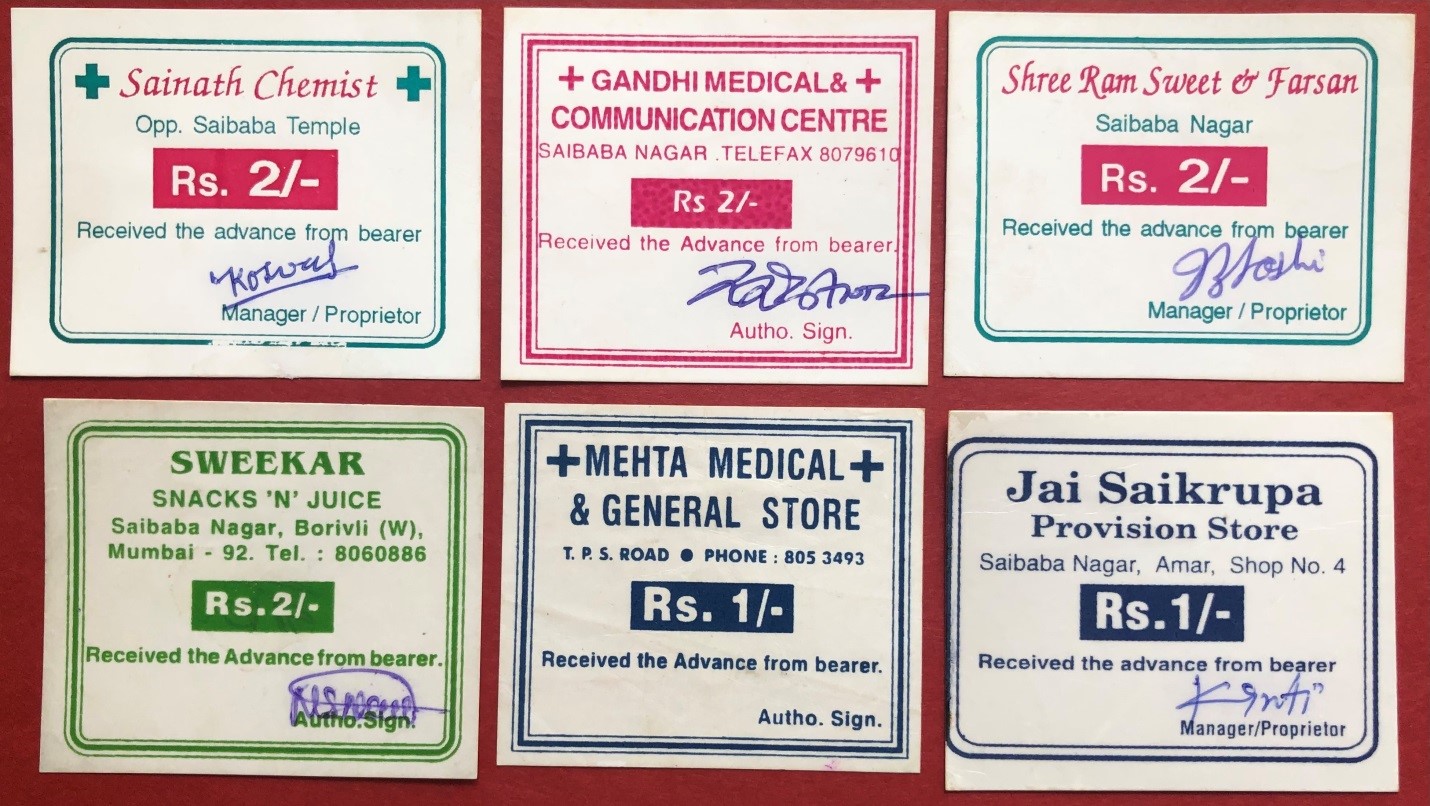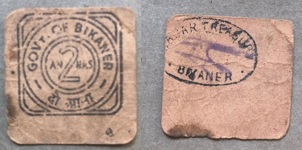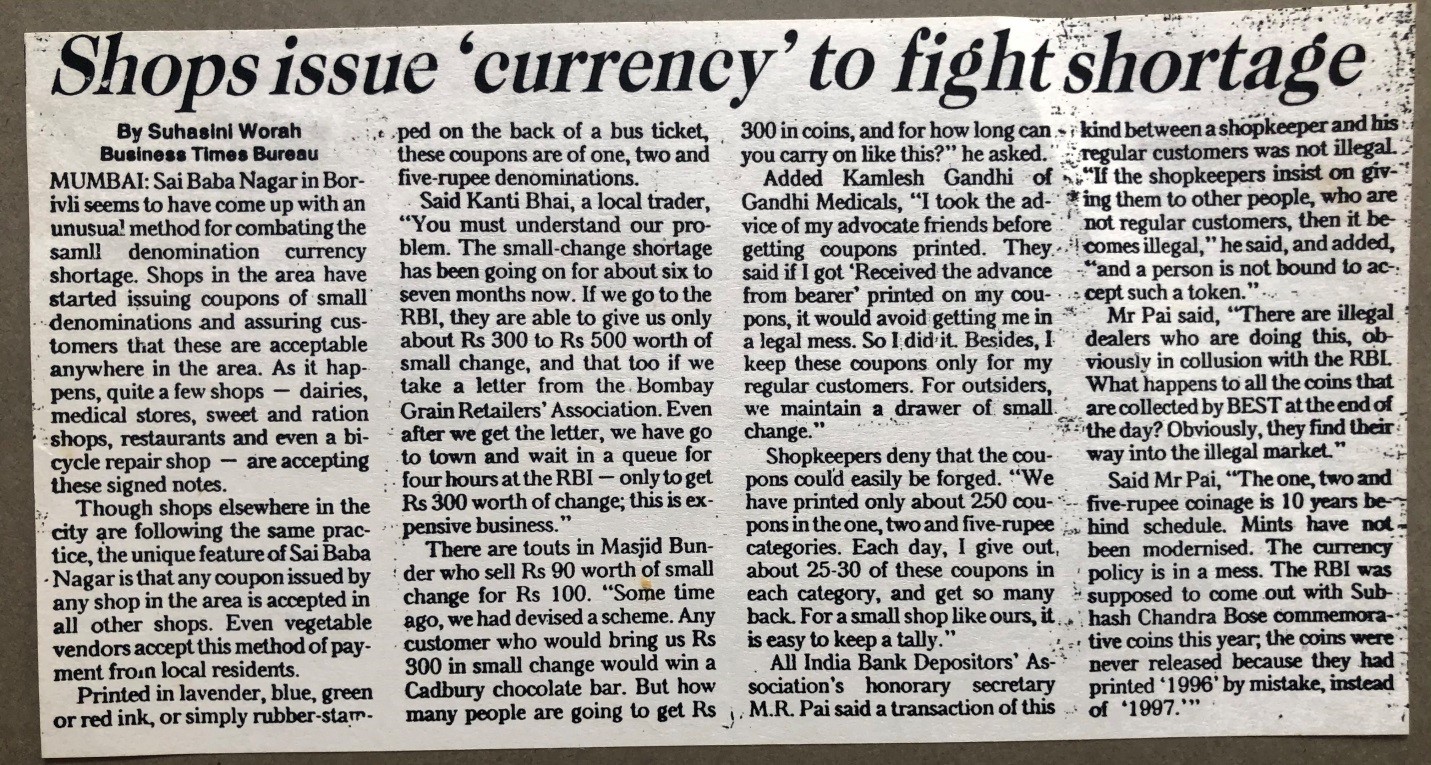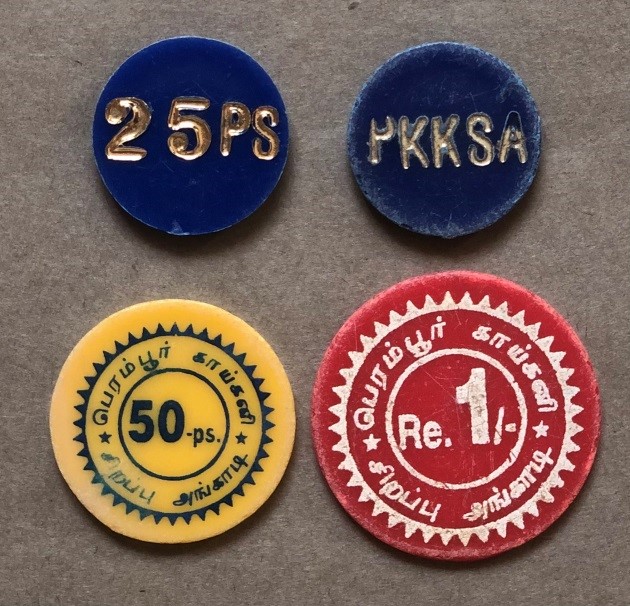In the late 1990s and early 2000s there was an acute shortage of coins. Mints were unable to cope with the demand of lower denomination coins or bank notes leading to great hardship to the retail shopkeepers who were unable to provide change to the customers against the payments made. It became a usual feature to hand a couple of pieces of candy in exchange of change. Many retailers started giving out a bar of chocolate if a person brought in large change of 300 to 500 rupees to meet their requirements. This brought in unscrupulous persons into play who started selling change at a hefty premium making exorbitant profits…..nothing to lose but much to gain.
Faced with problems in day to day transactions, the shopkeepers started working on ways to solve the problem. By end of 1997, the shopkeepers of Sai Baba Nagar in Borivili a suburb of Mumbai hit on an idea of getting coupons printed in the denominations of one rupee, two rupees and five rupees (Fig. 1). These were sold to their regular customers against payment easing the transactions.

Fig. 1: Coupons of lower denominations.
This was not new to the Indian scenario. In the Second World War many princely States of India had resorted to ease the currency shortage problem by printing lower denomination ‘cash coupons’ (Fig. 2) on paper or board. These cash coupons were authorized by the State who issued them and were treated on par with the official currency.

Fig. 2: Cash Coupon of Bikaner State
The steps taken by the Sai Baba Nagar did not go unnoticed. The Times of India, in its Mumbai edition reported the phenomenon on 28.09.1997 (Fig.3).

Fig.3: News in Times of India, Mumbai, 28.09.1997.
In Chennai, the Perambur Vegetable Fruit Super Market went a step ahead by getting ‘plastic money’ put in circulation that was accepted in the shopkeepers of the market. This currency (Fig 4) did not go beyond the confine of the Supermarket. The plastic denominations were 25 paises, 50 paises and one rupee. On the 25 paise piece the reverse bore the initial of PKKSA which stood for Perambur Kai Kani Sirpal Angandi while the 25 paise and one rupee had blank reverse.

Fig. 4: Plastic Tokens of the Chennai Super Market.
The Chennai Super Market also had printed like of one and five rupees bank notes (Fig. 4) with the initial of an official of the committee member. The printed piece was sealed in a plastic cover for a longer life.

Fig. 5: One and five rupees denomination ‘currency’.
It would be appropriate to term these ‘tokens’ as ‘Market Money’ as they fulfilled the definition of money that is, they were a unit of account, store of value and medium of exchange.
